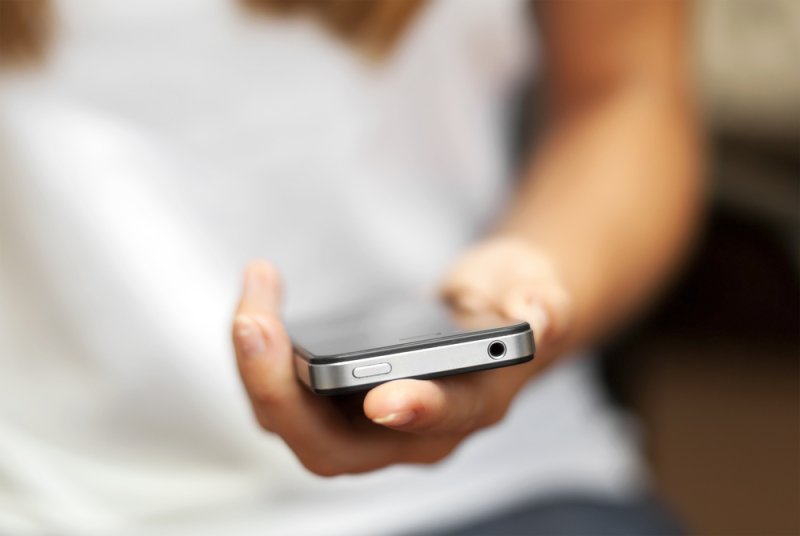
A small study suggests the constant tapping and typing people do
on their smartphones may increase risk for developing carpal tunnel
syndrome. Photo by Skylines/Shutterstock
FRIDAY, June 23, 2017 -- People who spend lots of time on their
smartphones may be scrolling, tapping and swiping their way to carpal
tunnel syndrome, a painful wrist and hand disorder.
A small study found a link between extended use of smartphones and
other hand-held electronic devices and a greater likelihood for
experiencing the telltale wrist and hand pain of the syndrome.
But the researchers did not prove that heavy smartphone use caused
carpal tunnel syndrome, and one hand surgeon said very few people in the
real world use their smartphones as much as the heavy users in the
study did.
Study author Peter White
said the findings suggest "caution may be warranted when using
hand-held electronic devices, in order to minimize the chance of
developing carpal tunnel syndrome."
White is an assistant professor in the department of health technology and informatics at Hong Kong Polytechnic University.
The carpal tunnel is a narrow and hard pathway of bone and ligament
found at the base of the hand, according to the U.S. National Institute
of Neurological Disorders and Stroke. It contains tendons, which enable
finger-bending, as well as the so-called "median nerve," which runs from
the forearm to the palm and provides feeling to some fingers.
Carpal tunnel syndrome can gradually develop following repeated
pressure to the point where the median nerve passes into the hand and
meets the wrist.
A common cause, said White, are work conditions that call for
"repetitive, forceful or awkward hand movements, for example, when
typing." And the result is often pain, which sometimes extends up the
arm, as well as numbness, finger tingling and weakened grip strength.
To explore whether smartphone use might up the carpal tunnel syndrome
risk, White and his associates followed up on their prior investigation
involving 500 Hong Kong University students.
Those students fell into two camps: intensive users of hand-held
electronic devices, meaning five or more hours of use per day, and
non-intensive users, or less than five hours per day. Hand-held devices
included mobile phones, tablet computers and game consoles.
More than half, 54 percent, of the intensive group reported
musculoskeletal pain and/or discomfort, compared with 12 percent among
the less intensive group.
The new study looked at 48 students from the first study. Half were
intensive users who spent on average more than nine hours a day using
their devices. Those in the other group spent just under three hours a
day on their devices.
The participants answered questionnaires on electronic device habits
and any pain or discomfort in their neck, shoulder, back, elbow or
wrist/hand region.
Ultrasounds and physical exams on the wrist region were also done.
Muscle pain was found to be more common among intensive users.
The researchers also found that intensive electronics users had
"significantly" more discomfort, and more severe discomfort, in their
wrist and hand.
The more time a person spent using a hand-held electronic device, the
more intense and long-lasting their wrist and hand pain was.
To explain why, the researchers pointed to device design, which
requires the repeated use of fingers to click, swipe, scroll, tap and
press. The result is an enlargement and flattening of the median nerve,
alongside bulging of a key ligament.
To minimize risk, White advises keeping the wrist as straight as possible when using devices.
He added, "One should try to minimize repetitive movements of one's
fingers and thumb when using hand-held electronic devices, especially
for single-hand use. It is also important to take regular rest periods,
so as to avoid continuous intensive use, so as to allow recovery time
and to prevent prolonged stress."
But hand surgeon Dr. Dori Cage questioned how much of a risk smartphone use really poses.
"The strong correlation of carpal tunnel syndrome with smartphone use
is surprising, as I have not seen that in my practice," said Cage, an
American Academy of Orthopaedic Surgeons spokesperson.
Cage, who's with San Diego Hand Specialists, also suggested that "it
is unlikely that the general population would have [the] degree of phone
use" seen among the intensive users in the study.
"This is likely an issue affecting only a small percentage of cellphone users," she said.
When News Breaks Out, We Break In. (The 2014 Bloggies Finalist)
No comments:
Post a Comment